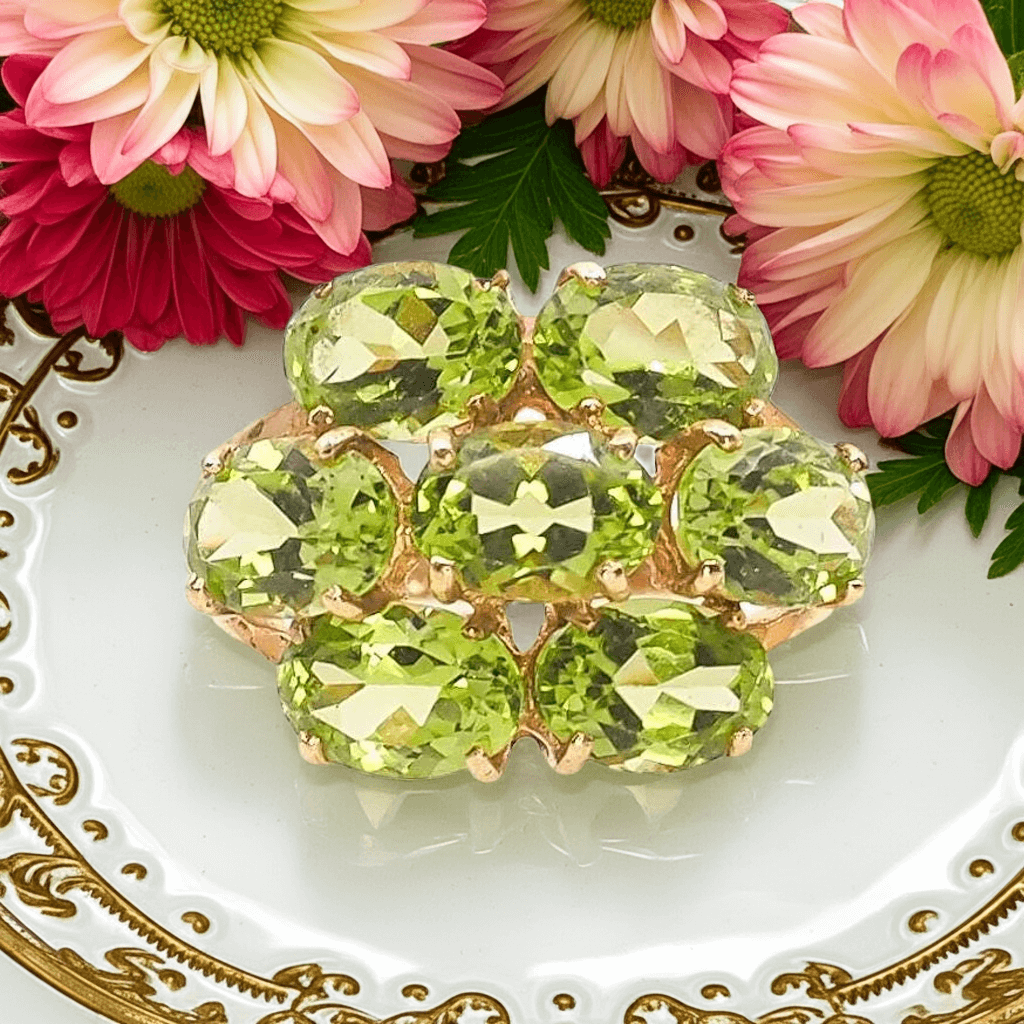
Peridot: The Gem of Sunlight, History, and Mystery
Few gemstones embody the spirit of summer quite like peridot. Its bright green shade—sometimes touched with golden undertones—seems as if it has captured a ray of sunlight. But peridot is more than just beautiful; for thousands of years, this stone has been cherished, traded, and sometimes mistaken for other treasures, carrying a history as radiant as its color.

Peridot belongs to the mineral family olivine, a magnesium iron silicate. What’s fascinating is that its color is completely natural—no heating, dyeing, or enhancements. Its golden-green glow comes from iron within the crystal structure, and unlike many gemstones, what you see when it’s mined is the color it will stay forever. Measuring 6.5 to 7 on the Mohs hardness scale, it’s strong enough for jewelry but still needs a little care. And here’s a fun twist: peridot isn’t only formed deep within Earth’s mantle—it has also been found in rare pallasite meteorites, making some peridots literally out of this world.

Throughout most of history, people recognized peridot from more earthly sources. The ancient island of Zabargad in the Red Sea—now part of Egypt—was famous for its deposits, providing stones for the Pharaohs for over 3,500 years. In fact, many of Cleopatra’s renowned “emeralds” might actually have been peridots from this island. Today, high-quality peridot also comes from the mountains of Myanmar, the Himalayan slopes of Pakistan’s Kashmir region, and the deserts of Arizona, where Native American tribes like the San Carlos Apache have valued the stone for generations.

Peridot Mesa on the San Carlos Apache Indian Reservation in Arizona. Image: Shutterstock
Legends surrounding peridot are as vibrant as the stone itself. Ancient Egyptians called it the “gem of the sun,” believing it could ward off nightmares and evil spirits, especially when set in gold. In medieval Europe, it was highly valued as a talisman brought back by Crusaders from the Middle East, believed to bring peace and banish darkness. Some biblical scholars even suggest that peridot may be the “chrysolite” described in the Old Testament, one of the twelve stones on the High Priest’s breastplate.

Peridot Intaglio Portrait of Cleopatra c. 175 BCE. Image: Walters Art Museum, Public domain, via Wikimedia Commons
History also provides us with some famous examples of this green beauty. The Shrine of the Three Kings in Cologne Cathedral, Germany, is decorated with over 200 carats of peridot, believed to be of Egyptian origin. Across the ocean, the Smithsonian Institution houses one of the largest cut peridots in the world—a captivating 310-carat stone from Zabargad Island, shining like a drop of captured sunlight.
Today, peridot remains known as a stone that uplifts the spirit. Sailors once relied on it to calm rough seas; today, crystal enthusiasts believe it promotes emotional balance, relieves stress, and encourages new beginnings. Even if you don’t believe in its metaphysical properties, there’s something undeniably uplifting about that green—bright enough to catch the eye, yet warm enough to complement nearly any skin tone.

From the tombs of Pharaohs to the peaks of the Himalayas, peridot has traveled through history as a gem of light, renewal, and resilience. Whether worn as a bold statement ring, set in antique gold, or combined with diamonds in a modern design, it carries a legacy of beauty that has lasted for millennia. As a true gemstone of the sun, peridot doesn’t just reflect light—it appears to radiate it from within.
